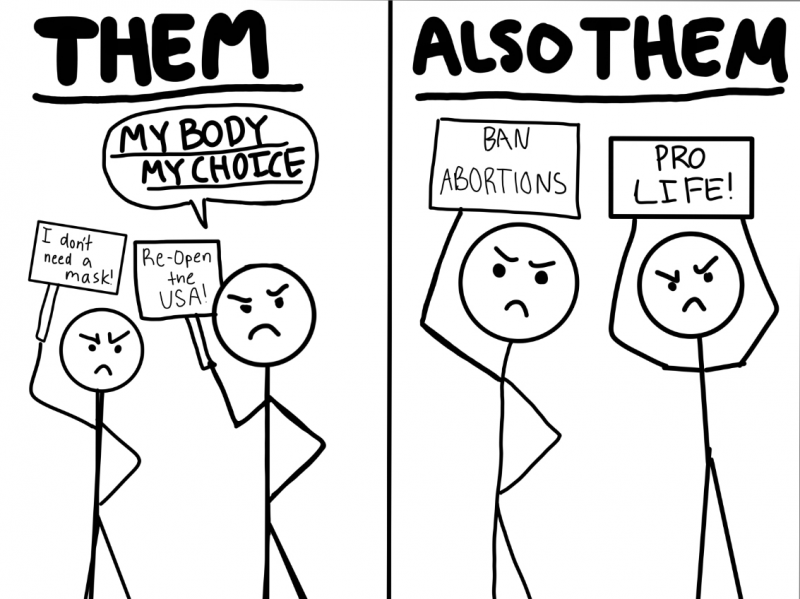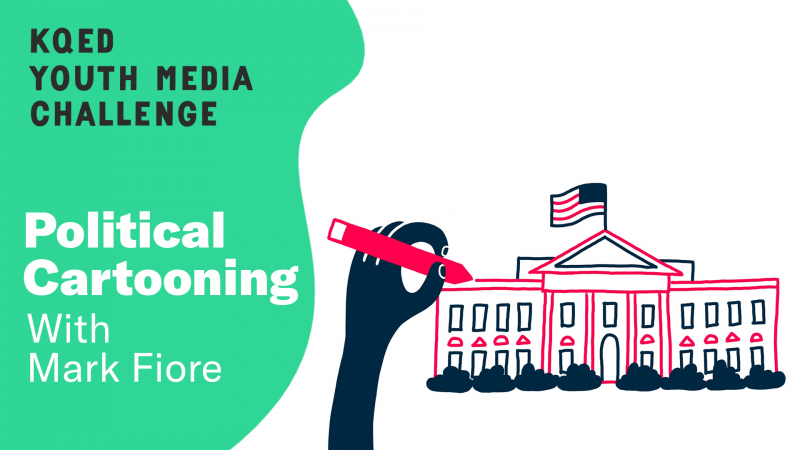Should students talk politics at school? “Yes,” says Brad Lakritz, an 8th grade social studies teacher at James Denman Middle School in San Francisco, “now more than ever.” But debating the issues doesn’t have to mean just gloom and doom. We can also bring humor to the conversation. Lakritz often turns to political cartoons to help students make sense of current events.
Now Lakritz’s students and others can create and share their own political cartoons as part of our newest youth media challenge: Political Cartooning With Mark Fiore.
“People cannot shy away from politics in America anymore. Teaching political cartoons as a way of summarizing a story makes it easy to digest and understand key issues from one side or another. Lakritz said. “Students feel pride in having their voice and perspective seen. Students learn about the perspectives of their classmates, the greater society, and the world.”
KQED’s Political Cartooning youth media challenge invites students to create one-panel political cartoons on any issue, local or national. Cartoons can be hand-drawn or created using digital tools, but they must be original work. (No memes.)

